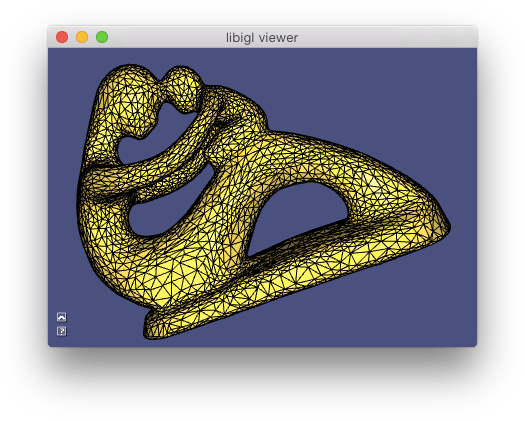
Libigl purposefully does not build itself around complicated mesh data-structures. This is freeing for many reasons: it's very easy to include our code in an arbitrary project, functions are not artificially limited to manifold meshes, array based data structures are easily serialized and fast, matrix operations on vertex positions are directly exposed, etc.
But our choice is also limiting. In particular, combinatorial changes to the mesh are potentially expensive and difficult to implement. Recently, I took a first stab at implementing an efficient edge-collapse routine for libigl. Indeed I'm seeing good performance: O(1) constant time for a single edge collapse and O(log m) time for cost-priority-queue-based collapses. The data structures are a little "messy" in the sense that when edges or faces disappear their rows are not deleted, but rather just redacted: entries are replaced with NULL values. This is because my approach is array-based and constant resizing would ruin performance. Luckily for edge-collapse, the number of elements only decreases. For edge-split I'll have to think about amortized costs...
For now, check out the updated tutorial entry for libigl's new mesh decimation and edge collapse features.
The code is "programmable" in the sense I expose function handles for computing edge costs and merged vertex placements. Though the default functions I currently provide are quite naive, this should support rather advanced "Progressive Meshes" style simplification with creases, sharp features, adaptivity, etc.